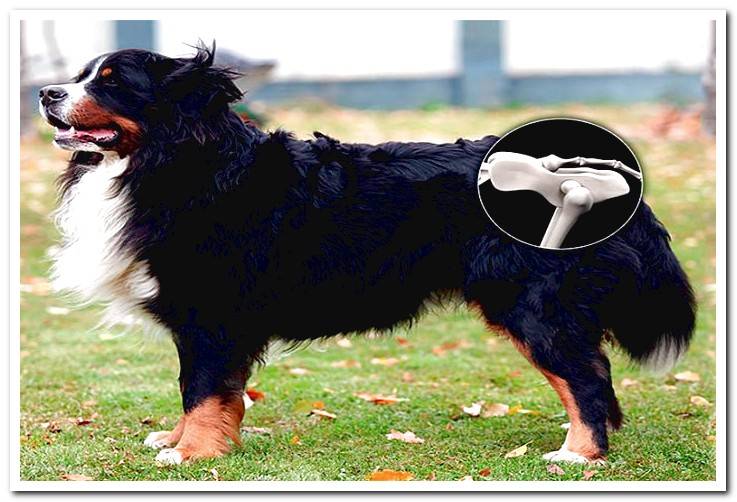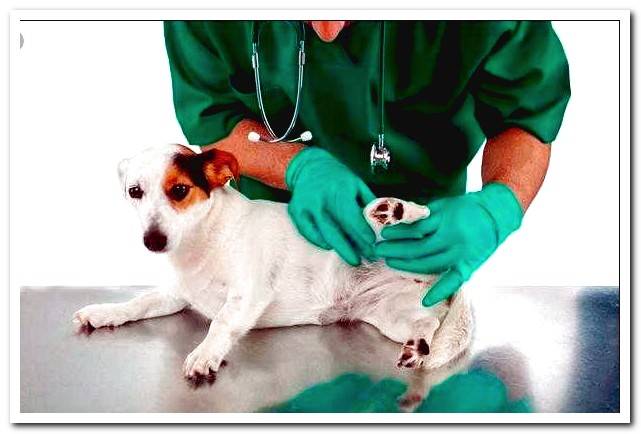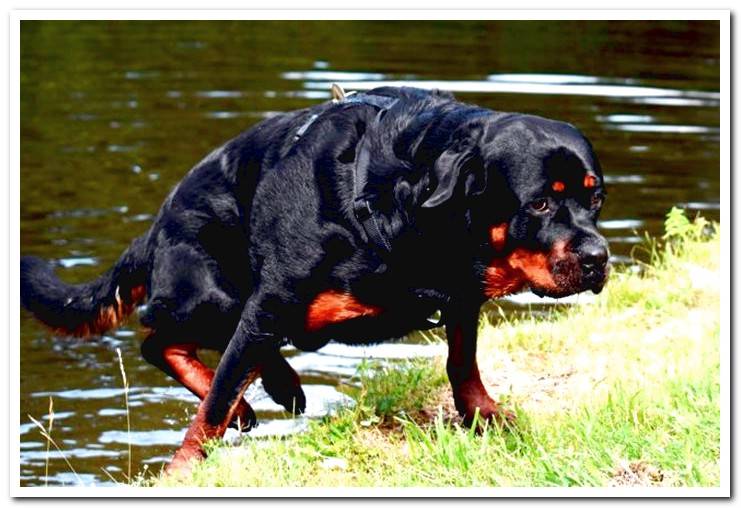
Hip dysplasia is a fairly common joint disease in dogs and the treatments available for this pathology are increasingly complete and innovative. Until a few years ago, treatment for canine hip dysplasia was based on giving pain medication and performing surgery when the disease was very advanced.
Currently, therapeutic options have been improved, allowing dogs with this pathology to have an optimal quality of life, reducing the need to take measurements. Below, we present the main measures and therapies for the conservative treatment of hip dysplasia in dogs.
Index of contents
- 1 What is canine hip dysplasia?
- 2 Why does hip dysplasia occur?
- 3 How is hip dysplasia diagnosed?
- 4 What is the treatment of hip dysplasia?
- 5 Conservative treatment options
- 5.1 Weight control
- 5.2 Physiotherapy
- 5.3 Hydrotherapy
- 5.4 Laser therapy
- 5.5 Joint or nutraceutical supplements
- 5.6 Acupuncture
- 5.7 Platelet-rich plasma and stem cells
- 5.8 Ozone therapy
- 6 Analgesic and anti-inflammatory medication
What is canine hip dysplasia?
Canine hip dysplasia is a disease that affects the hip joint. It is characterized in that the two parts that make up this joint (head of the femur and acetabulum) do not fit properly.
This leads to progressive wear of the articular cartilage, to the periarticular structures become inflamed and a degenerative process of the bones begins (osteoarthritis).

Why does hip dysplasia occur?
Although there are several factors that can favor the development of this disease, the main risk factor is genetic. Hip dysplasia it is a hereditary disease Therefore, dogs are born with it, and depending on certain factors (diet, exercise level, body weight, etc.), their symptoms develop to a greater or lesser extent.
Excessive feeding or intense exercise during the growth of puppies are high risk factors for the development of hip dysplasia. Obesity and lack of physical activity during adulthood contribute to a more rapid evolution of this disease.
How is hip dysplasia diagnosed?
To confirm that a dog has hip dysplasia and determine the degree of involvement, a hip radiograph should be performed in a certain position (with both hind limbs in forced extension), thus requiring it to be done under sedation.
What is the treatment of hip dysplasia?
There are two ways to treat this disease:
- Conservative treatment: It consists of the combination of a series of therapeutic measures aimed at reducing joint inflammation and relieving pain to allow the dog to lead as normal a life as possible without the need for surgery.
- Surgical treatment: It is indicated in cases of severe dysplasia in which there is a greater degree of joint degeneration. There are several surgical procedures and the choice of one or the other will depend on the specific characteristics of each patient (excision of the femur head, hip prosthesis).
Conservative treatment options
We must bear in mind that hip dysplasia is not cured, but we can take a series of measures to slow down the progression of this disease and for our dog can have a good quality of life minimizing your joint pain.
There is no single treatment for hip dysplasia, but it is a multimodal treatment, that is, various therapeutic measures and techniques must be applied so that together we achieve effective control of the symptoms of this disease.
Weight control
The most important factor to control to improve hip dysplasia is keep the dog at its optimal weight and even somewhat thin throughout its life. For this, it is necessary to use diets with a reduced caloric content. This measure should ALWAYS be taken in dogs with hip dysplasia.
Physiotherapy
It is essential that physiotherapeutic treatment be started from the beginning of this disease. The goal of this therapy will be to strengthen the muscles of the hind legs and the glutes to achieve a good stabilization of the hip joint and relieve the contractures that occur in the front legs by compensation, since these dogs move their weight forward to load less weight on the hind legs.
Among the techniques used by veterinaryns specialized in physiotherapy to achieve these objectives are: decontracting massages, active therapeutic exercises, stretching, obstacle courses, etc.

Hydrotherapy
Hydrotherapy is perhaps the most suitable exercise for dogs suffering from hip dysplasia, since we manage to strengthen the muscles without any joint impact.
Dogs that have intense hip pain are barely able to exercise out of the water, however, in the pool that pain is minimized by relieving your own weight thanks to the effect of flotation, and are able to mobilize all your joints in an effective way, achieving rapid muscle development.
Laser therapy
Currently, veterinary therapeutic lasers have been developed that achieve an anti-inflammatory effect at the articular level, reducing pain patterns in dogs with hip dysplasia. This therapy is a good option as an additional measure in pain management.
Joint or nutraceutical supplements
There are veterinary supplements that are effective for the control of this disease and that are natural, so they do not have the side effects of medications:
- Chondroprotectors (Chondroitin sulfate, Glucosamine, hyaluronic acid): they are natural components of articular cartilage.
- Omega-3 fatty acids : long-term administration (for 2 to 3 months) has been shown to achieve an anti-inflammatory effect on the body comparable to that of anti-inflammatory drugs such as carprofen.
- Turmeric concentrateong>: Turmeric also provides an anti-inflammatory effect in the medium term, making it ideal for this treatment.
Acupuncture
By inserting small needles into specific points on the skin, the acupuncture achieves an immediate analgesic effect and better tissue oxygenation.
There is a specific technique for the treatment of hip dysplasia that uses acupuncture basics to control pain in dogs with this disease: gold implants; It consists of the subcutaneous implantation of small gold spheres in three specific acupuncture points that surround the hip joint. These spheres continuously stimulate acupoints and a sustained analgesic effect is achieved.
Platelet-rich plasma and stem cells
The beneficial effects of intra-articular injections of platelet-rich plasma or stem cells in dogs with osteoarthritis secondary to hip dysplasia are being investigated.
To obtain the plasma, we only need to extract a small amount of blood from the dog, which, after processing in the laboratory, are injected into the joint to be treated. The process for stem cell extraction is somewhat more complex since we need animal fat cells (normally obtained from intra-abdominal fat).
Clinical studies have shown that with these injections the pain level in dogs with osteoarthritis is reduced and limb strength is improved in treated patients.
Ozone therapy
Ozone therapy is a very innovative veterinary technique that consists of administering therapeutic ozone by different routes depending on the case (intramuscular, subcutaneous, intravenous, intrarectal). Ozone, among others, has an antalgic and anti-inflammatory effect since it inhibits or blocks substances that cause pain and inflammation.
Analgesic and anti-inflammatory medication
All the measures explained above are aimed at controlling pain in order to be able to suppress or decrease the use of medication. However, in cases where the dog suffers from acute pain or relapse, the veterinaryn will prescribe the analgesic or anti-inflammatory medication that he deems appropriate (tramadol, meloxicam, galliprant, etc.)
As you can see, the treatment of hip dysplasia offers many alternatives and all of them are valid and together they are enhanced, allowing a good management of this disease to offer the best quality of life to dogs with this pathology.
